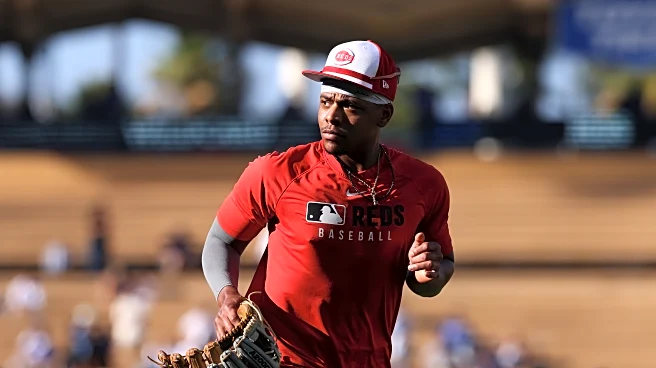What's Happening?
The Cincinnati Reds are facing budget constraints as they plan their roster for the 2026 season. Nick Krall, the team's general manager, along with Brad Meador, is exploring various strategies to optimize
the team's performance within these financial limitations. The Reds have historically utilized trades, the waiver wire, and incentive-laden contracts to build their roster. This offseason, they are considering middle-tier free agents such as outfielders Ryan O'Hearn and Cedric Mullins. Additionally, the team might explore trading from their depth in starting pitching, although Krall and Meador have expressed reluctance to move rotation pieces like Greene or Brady Singer.
Why It's Important?
The Reds' approach to managing their roster under financial constraints is crucial for maintaining competitiveness in Major League Baseball. By potentially trading valuable starting pitchers or signing middle-tier free agents, the team aims to balance performance with budgetary limitations. This strategy could impact the Reds' ability to compete in the upcoming season, influencing their standing in the league and affecting fan engagement and revenue. The decisions made by Krall and Meador will be pivotal in shaping the team's future and could set a precedent for other teams facing similar financial challenges.
What's Next?
As the offseason progresses, the Reds will continue to evaluate their options for enhancing the roster. The team is expected to make decisions regarding trades and free agent signings before Spring Training opens in February. Stakeholders, including fans and analysts, will be closely monitoring these developments to assess the team's prospects for the 2026 season. The management's ability to navigate these financial constraints effectively will be critical in determining the Reds' competitiveness and success in the league.
Beyond the Headlines
The Reds' situation highlights broader issues in Major League Baseball regarding financial disparities among teams. Smaller market teams often face challenges in competing with larger market teams that have more substantial budgets. This scenario underscores the importance of strategic management and creative solutions in sports organizations. The Reds' approach could influence discussions on league policies and financial regulations aimed at ensuring competitive balance.












